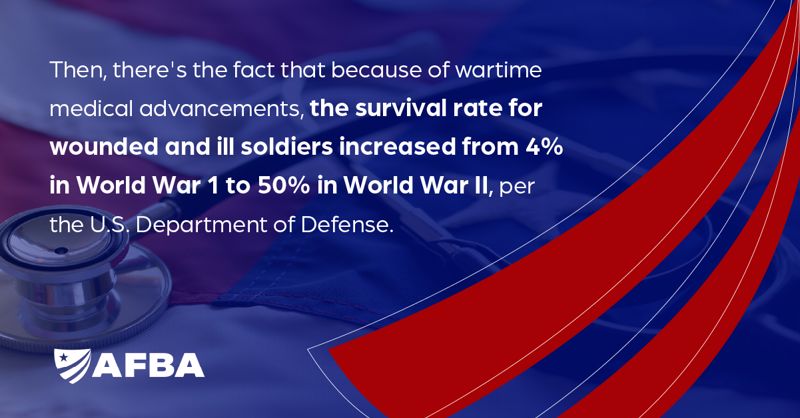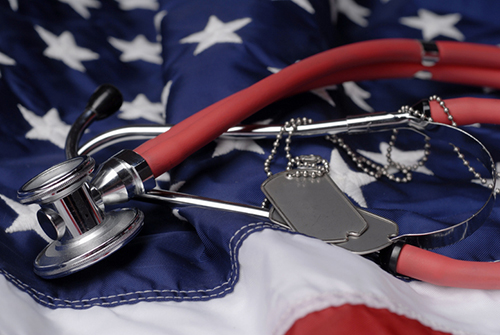Historically, the military has been at the forefront of medical innovation. The necessity of saving lives on the battlefield has led to important discoveries as well as the development of cutting-edge medical techniques and technologies.
Major Walter Reed, for example, led the Yellow Fever Commission in Cuba in 1900, according to the Department of Defense. This commission’s work found that mosquitoes carried Yellow Fever — a discovery that saved countless lives.
Then, there’s the fact that because of wartime medical advancements, the survival rate for wounded and ill soldiers increased from 4% in World War 1 to 50% in World War II, per the U.S. Department of Defense.
The connection between military and civilian medicine is undeniable, as many advancements initially intended for soldiers have found their way into everyday healthcare practices. Let’s take a look at a few additional medical advancements that originated in the military.

Field Triage and Evacuation Systems
Military forces developed efficient triage and evacuation systems to provide timely care to injured soldiers. These systems have been adapted for civilian emergency response, ensuring that critical medical attention is given to those who need it most during such events as accidents and natural disasters. The military’s readiness and protocols for crisis response and disaster management have also been integrated into civilian disaster preparedness and response efforts.
Hemostatic Agents and Blood Clotting Innovations
The military played a significant role in advancing blood clotting technology. Hemostatic agents developed for military use have been instrumental in saving lives on the battlefield. Today, they’re widely used in civilian healthcare to control bleeding during surgery and trauma cases.
Trauma Care and Surgical Techniques
A bit more on trauma — battlefield surgery innovations have led to enhanced emergency surgical techniques in civilian healthcare. Military surgeons’ expertise in dealing with high-stress, trauma-related surgeries has improved outcomes for civilian patients in emergency rooms worldwide.
Prosthetics and Rehabilitation
The military’s dedication has driven innovations in prosthetic limb technology to rehabilitate injured soldiers. These advancements have greatly benefited civilian amputees by providing them with more functional and lifelike prosthetic limbs.
There have been significant advances in prosthetics since 9/11, according to the Military Health System and Defense Health Agency. For example, the Department of Veterans Affairs funded a clinical trial focused on percutaneous osseointegrated prosthesis, or POP implants. These implants are surgically anchored to an individual’s remaining thigh bone. In addition to several benefits compared to traditional prostheses, patients have reported that the POP implants feel like they are a part of them.
Telemedicine and Remote Healthcare
For everyday folks, telemedicine is more common than ever, but they may not realize that the military has pioneered telehealth. This technology has had a substantial impact on rural and underserved civilian populations, improving access to healthcare services. For the military, telemedicine has enabled remote medical consultations and diagnosis for soldiers deployed in remote locations.
Vaccination and Preventive Medicine
The military has played a vital role in vaccine development and distribution, from smallpox to COVID-19. Lessons learned from military-led vaccine research have paved the way for widespread vaccination campaigns and bolstered public health efforts.
In addition to vaccines, the military has excelled in preventive medicine strategies, including disease surveillance and prevention. These strategies have proven effective not only for soldiers but also for civilian populations in preventing the spread of infectious diseases.

